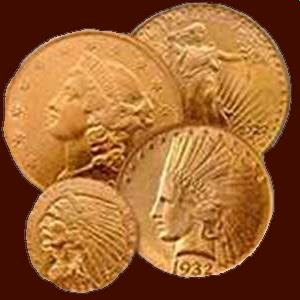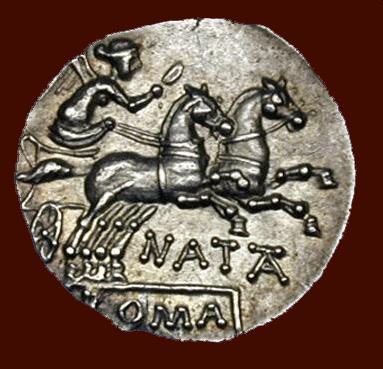








Designed by Nigel G Wilcox






The Paragon Of Metal Detecting
& Archaeology
& Archaeology
Powered By Sispro1
Roman Denarius A.D. - Currency Numismatics,
Denarius
For Reference ONLY
Everything For The Detectorist

*







Nero 65-66 AD
Born to the ancient and noble family of the Ahenobarbi in 37 CE, he was originally named Lucius Domitius Ahenobarbus. Through his mother Agrippina, he was related to the imperial dynasty that had begun with Julius Caesar. Nero s early youth was not easy. At the age of two his mother was banished by the emperor Caligula (37-41 CE) and, when his father died one year later, his inheritance was seized as well.
Numismatically, the coinage of Nero reflects the history of the reign as well as the tastes and politics of the emperor. Early on, Nero s mother appears on coins with him, but portrayals of her quickly disappear as their relationship grew more strained. Military successes such as the successful conclusion of the Parthian wars are commemorated on coins as well as Nero s public projects like the rebuilding of the Temple of Vesta after the Great Fire or the completion of a new harbor at Ostia. There are also depictions of Apollo playing the lyre which are intended to flatter this aspect of the emperor s own talent.
The most important aspect of Nero s coinage though is his monetary reform of the precious metal issues in AD 64. The weight of the gold and silver coins were reduced and the latter also saw a reduction in purity. These measures were taken so that that the emperor, who always needed cash, could issue more coins with the same amount of metal. These measures were inflationary but the effects were small at first. Nero was the first emperor to debase the coinage this way but the temptation to do the same proved irresistible to many of his successors too. Also part of the reform was the issue of unprecedented numbers of bronze, copper and brass coins.
The provincial coinages of the empire followed the lead of Rome. The coinage of Egypt was particularly affected. Vast amounts of older silver coins were melted down and recoined in a more debased form. New large bronze coins were also introduced at this time. For the provincial issues, this reign proved as much of a watershed as it did for the imperial issues.
* Nero, as Caesar, AR Denarius. 51-54 AD. NERO CLAVD CAES DRVSVS GERM PRINC IIVENT, young draped bust left / SACERD COOPT IN OMN CONL SVPRA NVM EX SC, simpulum on tripod and lituus on patera.
Born to the ancient and noble family of the Ahenobarbi in 37 CE, he was originally named Lucius Domitius Ahenobarbus. Through his mother Agrippina, he was related to the imperial dynasty that had begun with Julius Caesar. Nero s early youth was not easy. At the age of two his mother was banished by the emperor Caligula (37-41 CE) and, when his father died one year later, his inheritance was seized as well.
Numismatically, the coinage of Nero reflects the history of the reign as well as the tastes and politics of the emperor. Early on, Nero s mother appears on coins with him, but portrayals of her quickly disappear as their relationship grew more strained. Military successes such as the successful conclusion of the Parthian wars are commemorated on coins as well as Nero s public projects like the rebuilding of the Temple of Vesta after the Great Fire or the completion of a new harbor at Ostia. There are also depictions of Apollo playing the lyre which are intended to flatter this aspect of the emperor s own talent.
The most important aspect of Nero s coinage though is his monetary reform of the precious metal issues in AD 64. The weight of the gold and silver coins were reduced and the latter also saw a reduction in purity. These measures were taken so that that the emperor, who always needed cash, could issue more coins with the same amount of metal. These measures were inflationary but the effects were small at first. Nero was the first emperor to debase the coinage this way but the temptation to do the same proved irresistible to many of his successors too. Also part of the reform was the issue of unprecedented numbers of bronze, copper and brass coins.
The provincial coinages of the empire followed the lead of Rome. The coinage of Egypt was particularly affected. Vast amounts of older silver coins were melted down and recoined in a more debased form. New large bronze coins were also introduced at this time. For the provincial issues, this reign proved as much of a watershed as it did for the imperial issues.
* Nero, as Caesar, AR Denarius. 51-54 AD. NERO CLAVD CAES DRVSVS GERM PRINC IIVENT, young draped bust left / SACERD COOPT IN OMN CONL SVPRA NVM EX SC, simpulum on tripod and lituus on patera.
Roman Menu
Roman Timeline
Copyright All Rights Reserved by Nigel G Wilcox E-Mail: ngwilcox100@gmail.com
Denarius
Pages
Information Data
Main Coin Menu

VIEW ALL
Member NCMD
R.A.D. Menu
























